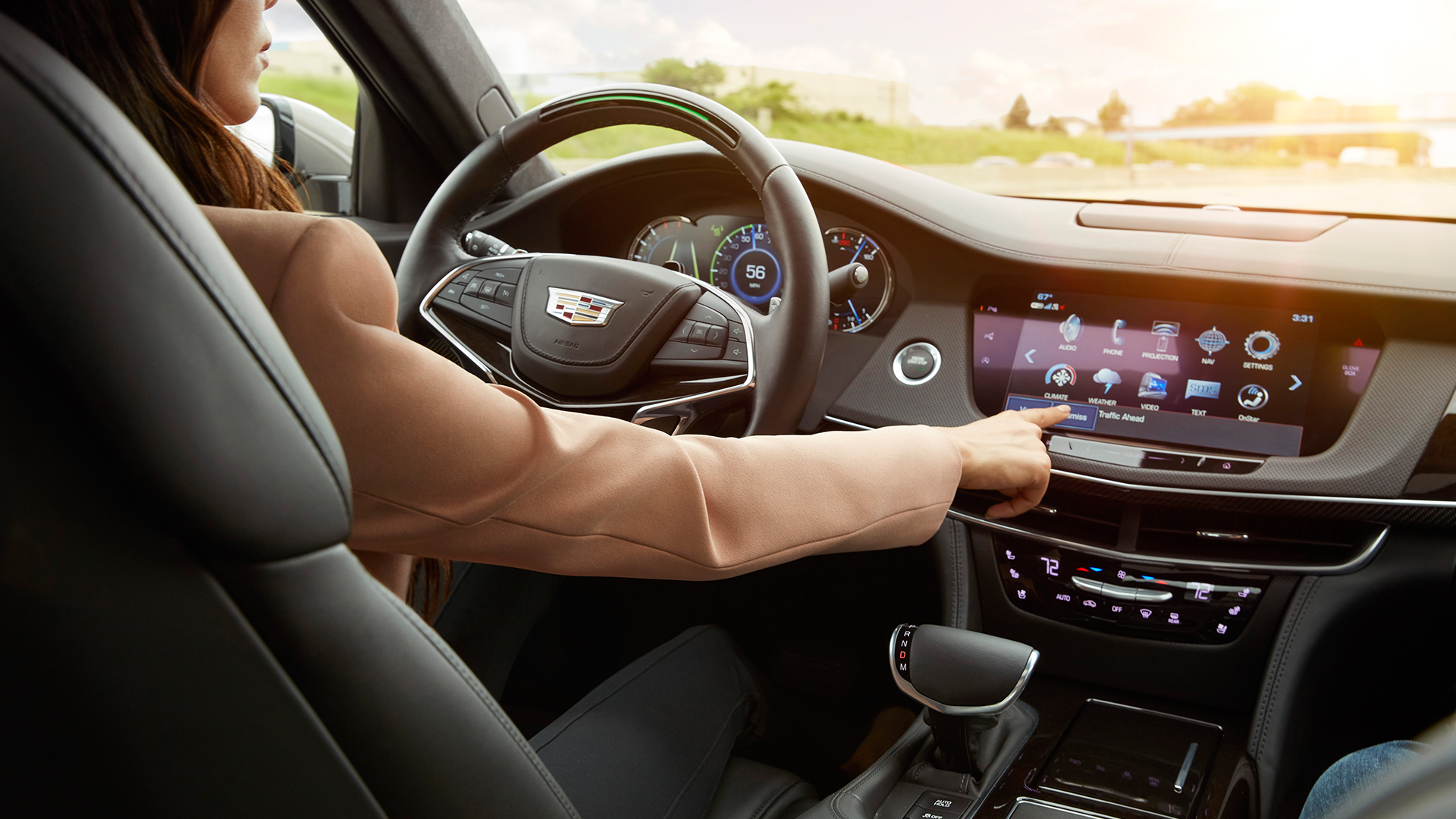

Luxury General Motors spinoff Cadillac has announced that its semi-autonomous driving platform, Super Cruise, is set to be deployed fleet-wide by 2020. By bundling the Autopilot competitor with wireless vehicle communication advancements, the Detroit automaker hopes to gain an early advantage over some of its biggest rivals in the industry.
GM calls Super Cruise “the world’s first true hands-free driver assistance feature for the freeway,” which includes an important word: assistance. Super Cruise, much likes Tesla’s Autopilot feature, is an autonomous driving aide which operates within the SAE-defined functionality of “Level 2” autonomy. This means that the automobile will use baked-in sensors and software logic to intelligently control both vehicle speed and steering, but only under certain conditions.
“We prefer to stay away from the SAE levels when discussing Super Cruise,” a GM spokesperson told The Drive when inquiring about Super Cruise’s functionality autonomy level, “But to state that it’s the first true hands-free system for the highway, as that is clear to customers what the system is and what it does.”
GM highlights that Super Cruise is a feature to be used on the freeway to offer what its marketing team is calling a “hands-free driver assistance feature”, however increasing controversy over how drivers treat Tesla’s autonomy software may lead drivers down a potentially dangerous path by ignoring the need to pay attention to their surroundings.
The GM autonomy division thought about this. The automaker implemented a form of user tracking which ensures that drivers keep their eyes on the road, even if their hands are not on the steering wheel. This feature, which Tesla CEO Elon Musk rejected for use in its vehicles due to concerns over inaccuracy, is meant to keep drivers aware and focused on the road by disengaging Super Cruise mode should the driver fail to respond to cues indicating the need to pay attention to the road.
Cadillac also worked to ensure its compatibility with the U.S. highway system by partnering with a modern-day cartography company, Usher, to map out all highways which it considers to be Cruise-worthy. These roads, as long as you remain under speeds of 85 mph, will permit the use of the semi-autonomous driving functionality,
Additionally, GM is pairing its expansion of Super Cruise with the integration of Vehicle-to-Everything (V2X) wireless communication in its fleet. With V2X, it becomes possible for vehicles to establish a shared communication infrastructure which can provide telemetry data amongst compatible participants. This could help alert other motorists of traffic jams, hazards in the road, or even prevent accidents due to non-connected motorists.
It’s not clear if customers will be permitted to opt-out of V2X participation, nor if the service, which is still widely unregulated, will be compatible with other vehicles on the market.

After the initial launch of Super Cruise within the Cadillac lineup, GM says that it will bring the semi-autonomous functionality to some of its other brands. By 2023, it plans to roll out V2X in what is being called a “high-volume crossover” for the automaker.
Lack of V2X regulation as a whole, despite being a hot-button topic for quite some time, has been an ongoing problem that has stymied industry growth. Hagai Zyss is the CEO of a company called Autotalks, which provides V2X hardware to manufacturers. He attests that the lack of a governing body has historically been problematic for manufacturers looking to prepare themselves for the inevitable connected future.
“It’s impacting final decision-making,” Zyss told Automotive News earlier this year, “Many are becoming proactive in saying: We’re just going to do it. Others say the process is stalled.”
The Drive’s very own deputy editor, Josh Condon, had his own experience in a Super Cruise equipped Cadillac CT6 just last year. He noted several instances that, much like the fatal Tesla accident that occurred in Apil, seemed to confuse the semi-autonomous system.
Unlike the Tesla incident which revealed that the driver failed to take over after he had received prompts from Autopilot, Super Cruise did not always relinquish control when it stumbled into a questionable scenario. In one instance, Condon recalled that GM’s decision to ignore traffic cones and other “smaller impedances” in the road, nearly resulted in the CT6 barrelling into bright orange construction barrels used to close off a lane.
Though autonomy as a whole is still in its infancy, an increasing number of automakers are working diligently to increase their presence in an emerging field. GM has chosen Cadillac as its flagship into the game, touting Super Cruise as a luxury feature aimed at providing its high-end customers with “unparalleled comfort and convenience.” If everything goes according to GM’s plan, it may become the first mainstream automaker to pose a legitimate threat to a creature-comfort that Tesla now dominates.